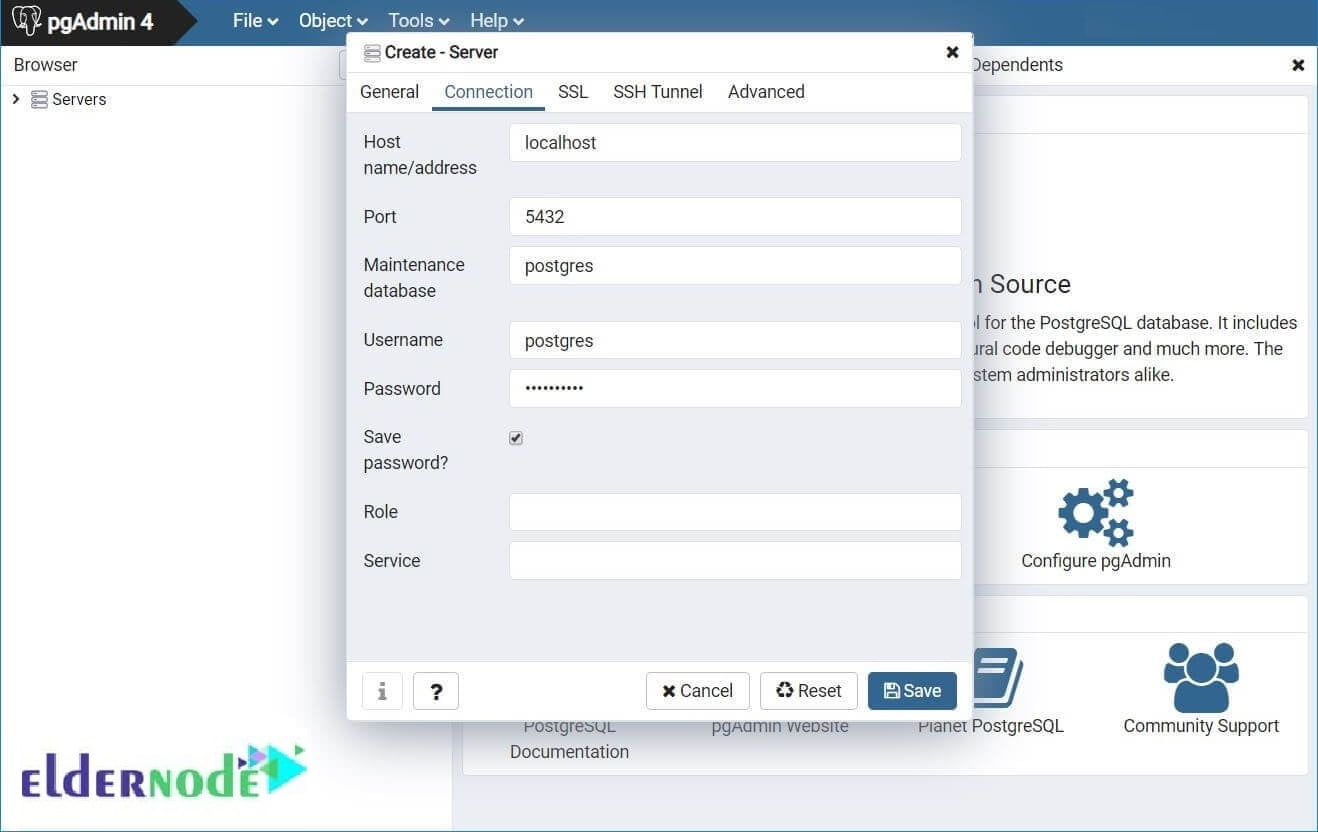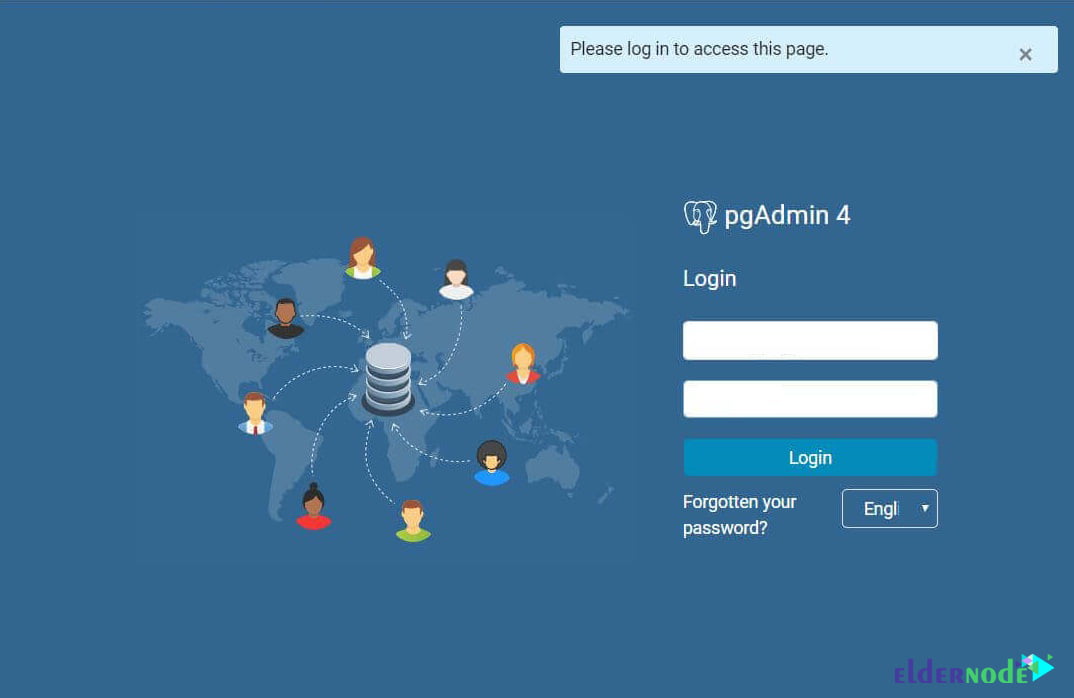

- #Pgadmin 4 connect to remote server install
- #Pgadmin 4 connect to remote server manual
- #Pgadmin 4 connect to remote server password
Local port 5432, which means that the ssh command won't be able to. If you are running a Postgres instance locally, then it will probably already be using Likewise: ssh -L 5432::10123 -L option means "forward LOCAL port 5432 to REMOTE host On the "Postgres" tab of the "Databases" page, and changing the hostname from Username with your PythonAnywhere username, 10123 with the port number (that is, on your own machine - not on PythonAnywhere) like this, replacing If you're using Windows, see the "Using PuTTY on Windows"Īs long as you're not running a Postgres instance locally, just invoke SSH locally If you're using a Mac or Linux, you probably already have the Running on your machine but actually sends data over SSH to your PythonAnywhere
#Pgadmin 4 connect to remote server manual
Manual SSH tunnelling ¶įor other tools that you want to run on your own machine, you can set up a tunnel that pretends to be a Postgres server If you're getting intermittent connection errors, try increasing one or both of If you have trouble with the SSH Tunnel connection, the project provides a This example uses the psycopg2 library, but you can use any Postgres local_bind_port, database = 'your database name', ) # Do stuff connection.
#Pgadmin 4 connect to remote server password
connect ( user = 'a postgres user', password = 'password for the postgres user', host = '127.0.0.1', port = tunnel. ', the port on the databases page ) ) as tunnel : connection = psycopg2. SSHTunnelForwarder ( ( '' ), ssh_username = 'your PythonAnywhere username', ssh_password = 'the password you use to log in to the PythonAnywhere website', remote_bind_address = ( 'your PythonAnywhere database hostname, eg.
#Pgadmin 4 connect to remote server install
Your Postgres database, you can install the sshtunnel packageĪnd then use code like this: import psycopg2 import sshtunnel sshtunnel.

If you're running Python code on your local machine, and you want it to access If you're using TablePlus, you can use the settings from this diagram provided by Then you should be able to connect from pgAdmin to your PythonAnywhere Postgres

Sure to use the correct port in the next step.Īnd give the connection a name on the "General" tab, then set up the stuff on theĪny user you have set up on your Postgres server, eg.

You can try any other port number greater than 1024 and less than 65536. If that doesn't work because you get an error like: cannot listen to port: 9999 The local side of your SSH tunnel will be at port 9999. As long as that SSH session is active, your SSH tunnel When this has worked, it will appear that you have SSHed into your The port from the Postgres tab of the "Databases" page inside PythonAnywhere Your PythonAnywhere database hostname, eg. Tunnel from your machine to PythonAnywhere and then connect to the local portįirst, we create the SSH tunnel: ssh -4 -L 9999:postgres-server-hostname:postgres-server-port you should: replace If you're running pgadmin, you can use SSH in a local terminal to create an SSH There are a number of ways to do this: pgAdmin ¶


 0 kommentar(er)
0 kommentar(er)
